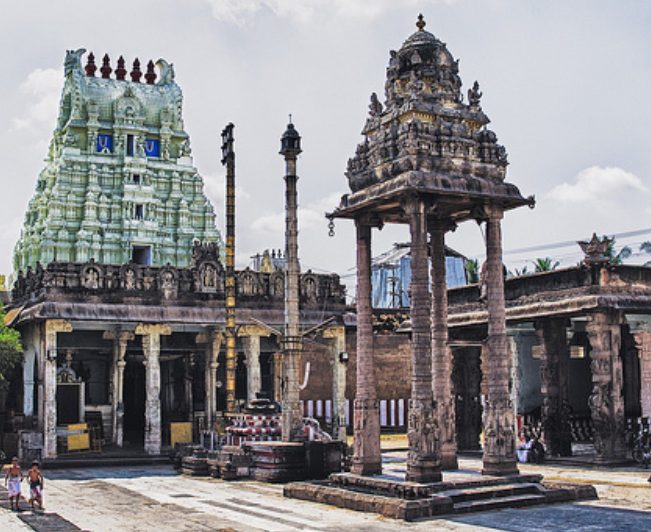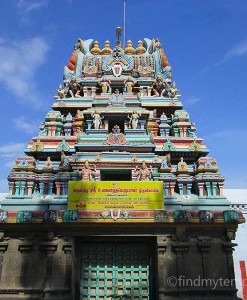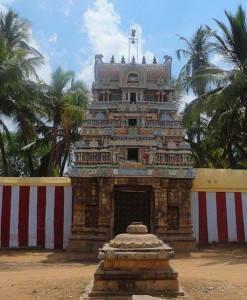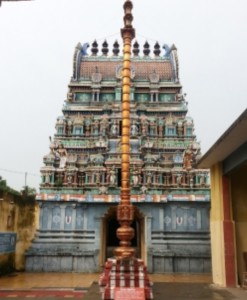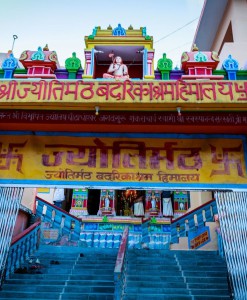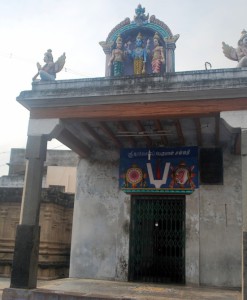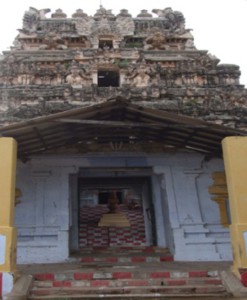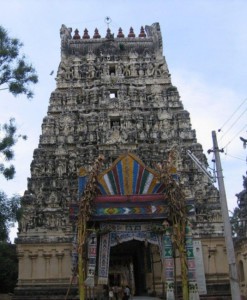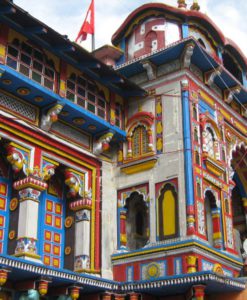No products in the cart.
Sri Varadaraja Perumal Temple, Kanchipuram
Varadaraja Perumal Temple or Hastagiri or Attiyuran is a Hindu temple dedicated to Lord Vishnu located in the holy city of Kanchipuram, Tamil Nadu, India. It is one of the Divya Desams, the 108 temples of Vishnu believed to have been visited by the 12 poet saints, or Alwars. It is located in a suburb of Kanchipuram known as the Vishnu Kanchi that is a home for many famous Vishnu temples. One of the greatest Hindu scholars of Vaishnava VisishtAdvaita philosophy, Ramanuja is believed to have resided in this temple. Among the Divya Desams, Kanchipuram Varadaraja Perumal temple is known as the ‘Perumal Koil’. This is one of the most sacred places for Vaishnavites.
Varadaraja Perumal Temple is huge within a 23-acre (93,000 m2) complex and shows the architectural skills of ancient Vishwakarma Sthapathis in temple architecture and is famous for its holiness and ancient history. The temple has 3 outer precincts (prakarams) namely Azhwar Prakaram, Madai Palli Prakaram and Thiru Malai Prakaram. There are 32 shrines, 19 vimanams, 389 pillared halls (most having the lion type yali sculpture) and sacred tanks some of which located outside the complex.
The main sanctum faces west and can be entered through a 130 feet tall, 7-tiered rajagopuram (main gateway tower). The eastern gopuram is taller than the western gopuram, which is contrasting to large temples where the rajagopuram is the tallest one. One of the most famous architectural pieces in the temple is the huge stone chain sculpted in a single stone. There is a 100 pillared hall which has sculptures depicting Ramayana and Mahabaratha. It is a masterpiece of Vijayanagara architecture.
The shrine of Varadarajaswamy is on a small hillock 10m tall and a flight of 24 steps, termed “Hasthagiri”. It has murals of the late Vijayanagara Empire on the ceiling. Other significant features of the temple are beautifully carved lizards and gilded with gold, over the sanctum. The vimana over the sanctum of Varadaraja Swami is called Punyakoti Vimanam and the one over Perundevi Thayar shrine is called Kalyana Koti Vimanam.
Apart from the main stone idol, the Varadaraja Perumal temple has the wooden image of Varadarajaswamy preserved within a silver box from which water is pumped out every 40 years. There is a shrine of Narasimha on the hillock. The origin of the mask of Narasimha is mysterious and believed to possess inexplicable powers.
In the second precinct downstairs contains four shrines, of which the important one is of Malayala Nachiar (Kerala consort), presumably built during the Chera kings in the early 14th century.
The third precinct has the shrine of Goddess Perundevi Thayar – it is customary for devotees to visit the shrine first before visiting the main Perumal shrine. There are four small pillared halls, identical in structure, called Thulabara Mandapas built during the 1532 for a ceremony of Achutaraya of the Vijayanagara empire.
There is a belief that the temple was first built by the Pallava king Nandivarman II. Varadharaja Perumal Temple was originally built by the Cholas in 1053 and it was expanded during the reigns of the great Chola kings Kulottunga Chola I and Vikrama Chola. In the 14th century another wall and a gopura was built by the later Chola kings. When a Mughul invasion was expected in 1688, the main image of the deity was sent to Udayarpalayam, now part of Tiruchirapalli District. It was brought back with greater difficulty after the involvement of local preceptor who enlisted the services of general Todarmal. Robert Clive, the British general during the colonial period visited the Garuda seva festival and presented a valuable necklace (now termed Clive Maharkandi), which is adorned during a special occasion every year.
The Legend is that Lord Brahma performed a Yaga in Hasthigiri, Kanchi for purifying his mind. He performed the Yaga avoiding his consort Saraswathi but with other Devis Savithri and Gayathri. Knowing the design of Brahmma, Saraswathi took the form of river Vegavathi and tried to flow on the Yaga to destroy it. Brahmma sought the help of Vishnu. Lord Vishnu came there and laid himself across the river in his birthday suit and prevented the flood. The Yaga was completed Lord Vishnu emerged from the Yaga flames and gave dharshan as an Archavatharamoorthi to the desire of Brahma. The Lord is therefore called ‘Hasthigirinath’ and ‘Varadaraja Perual ‘. The burn-marks caused by the flames could be seen even to-day in the refulgent face of the Utsavamoorthy, the processional deity. The Lord is self-manifest (Svvayam-vyakta) and not installed by any being, divine or human.
The name Hastigiri is applied in the association of Gajendra moksham and from the myth that Indra’s elephant Airavatam , in the form of a hill bears the image of Lord Vishnu. The name Attiyurar emerges from the ritual, that the original image of Varadaraja Perumaal here was made from Attimaram.
The annual Bhramotsavam is celebrated for 10 days in the month of Vaikasi (May-June). The festival on the Poornima Visaka day is very famous drawing lakh of devotees. 10 days Navratri in Purattasi (October-November) attracting huge crowd. Vaikunda Ekadasi, New Year day, Adhyayana Utsavam during Margazhi are also celebrated devotionally. There will be some festival in the temple every month. During Chitra Pournami and Pongal, the idol is taken out to neighboring areas. Garuda Seva and Rath Yatra are very also famous.
Garudotsavam is celebrated at Varadaraja Perumal temple three times a year. The first one is during the Brahmotsavam. The second one is celebrated in the month of Ani on the day with asterism ‘Swathi’ the birth star of Periyazhwar. The third one known as Gajendramoksha Garudaseva is celebrated on the fullmoon day of the month Adi. The car festival of Sri Varadaraja is also very famous and at times it takes more than a day for the sacred car to come back to its normal place.
People pray to Perumal for achieving excellence in education and family welfare and prosperity. Lord Sudarshana Azhwar Perumal) removes the obstacles in wedding proposals of the devotees. They also succeed in court cases and gain mental peace. Women facing health problems and seeking child boon pray to Mother Perundevi Thayar.
Devotees also pray to the golden and silver lizards in the temple for relief from any untoward happening due to the fall of real lizards on their body. The prayer also brings them mental peace, safety and success in their endeavours.
Kanchipuram Idli is a special prasadam available in temple. It is a huge Idli which is added with spices. Other Prasadams are also available. Offering Tulsi garlands to the Lord, sari to mother, Sugar pudding as Nivedhana are considered important prayer commitments.
The Moolavar here is Varadaraja Perumal in a standing posture facing west. The idol of Varadaraja Perumal is 40 feet long and in reclining posture carved out of a special type of wood, called Atthi wood. The deity is preserved under the pond, and is brought out only once in 40 years, for a period of 48 days. The next viewing of this deity is scheduled for the year 2019. Chakkarathazwar shrine – the deity of the discus of Lord Perumal – with 16 hands holding conch and discus is on the eastern side of the temple tank. He is also praised as Sudharsana Azhwar.
The consort of Lord Varadaraja, Goddess Perundevi is the incarnation of Mahalakshmi. Perundevi Taayaar is housed in a separate temple within the complex. Other shrines here include those to Kannan, the Alwars, and the Acharyas, Ramar, Kariamanikka Perumaal, Andal, Varaaha Perumaal.
The Varadaraja Perumal temple is open to the devotees offering prayers from 6 am to 12.00 in the noon and from 4.00 pm to 9.30 pm. Four devotion services are offered here by priests who are said to be descendents of Yagna Valkyar.
Varadaraja Perumal Temple By Road
Kanchipuram is 75 kilometers away from Chennai and is well connected by a network of roads with the other important towns and cities of Tamilnadu.
Varadaraja Perumal Temple By Rail
Trains for Kanchipuram are available from Chennai, Chengalpattu, Tirupati, and Bangalore.
Varadaraja Perumal Temple By Air
The nearest Airport is 60 km away from Kanchipuram and located is at Chennai – “Anna International Terminal” and “Kamaraj Domestic Terminal “.
Sri Varadaraja Temple, Kanchipuram, Tamil Nadu

